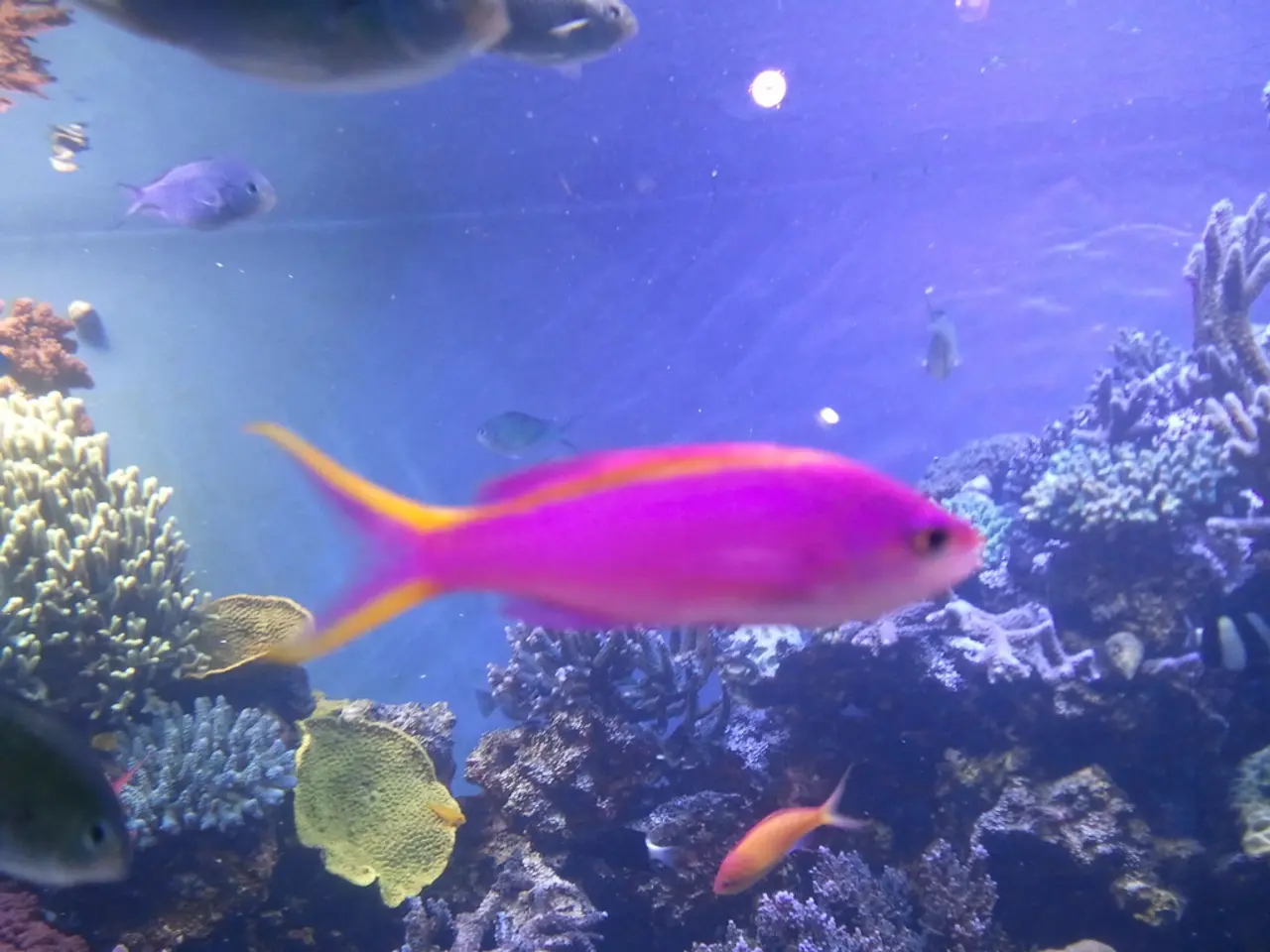Method for Eradicating Algae and Diatoms in a Reef Aquarium - Copepods as a Solution
In a pioneering experiment, aquarium aficionado Robert, with over 25 years of experience, ventured into the realm of copepods and their impact on aquarium biomes. The research sought to address questions that could aid in achieving more favorable outcomes in personal aquariums.
The experiment, conducted with 12 test tanks, utilized Algaebarn's Ecopod Blend, a mix of four distinct pod species: Tigriopus californicus, Tisbe biminiensis, Apocyclops panamensis, and Oithona colcarva. Over 100,000 live pods per tank were introduced to ensure a robust population was active.
The tanks were monitored for 4 additional weeks following the introduction of the pods. The presence of copepods had no direct effect on existing cyanobacteria or chrysophytes and did not prevent residual blooms of these pests post-cleaning. However, the diverse, balanced biomes that contained microcrustaceans were better equipped to manage pests than those without.
One notable observation was that in tanks experiencing a diatom bloom and containing predators that would prey upon the pods, adding one jar per 15 gallons ensured a viable foundation. The diatoms were eliminated from all of the test tanks that contained a serious bloom within one week of adding Algaebarn Ecopods.
Copepods do not consume macroalgae or hair algae. Instead, they serve as beneficial microfauna that help maintain water quality by consuming organic waste like fish food remnants and detritus, reducing harmful bacteria, and providing a natural food source for some fish and invertebrates.
Not all live rock is equal; the Gulf Rock tank was more diverse than the Indonesian Live Rock tank. Interestingly, the Gulf Rock tank produced the most diverse biome, but the sterile control tank had the most balanced biome.
The addition of pods can aid in long-term defense against photosynthetic pests. However, predators like flatworms can impact the population of pods in a reef tank. In well-established aquariums, many pod species are scavengers and prey upon phytoplankton, diatoms, microalgae, and detritus.
When seeding a new aquarium, one 16oz jar per 30 gallons is the minimum recommendation for seeding the tank. Creating a safe haven for pods (like a refugium) can help maintain a well-balanced biome. Adding pods to your tank at night after the fish have been fed and the lights go out is the best way to give the pods a fighting chance at establishing a stable population.
The elimination of one pest often leads to another taking its place in the biome. Therefore, it's crucial to maintain a diverse, balanced aquarium environment to ensure a sustainable ecosystem. Copepods play a pivotal role in the aquatic food web and help maintain a balanced and healthy aquarium environment.
In conclusion, the study offers valuable insights into the role of copepods in aquarium biomes and provides practical advice for aquarium enthusiasts seeking to maintain a healthy, balanced ecosystem in their personal aquariums.
Read also:
- Researchers delve into unexplored territories of cardiovascular wellness with the Apple Watch
- Enhancing Vaginal Health through Probiotics: Top Strains for Maintaining pH Levels
- Uncovered in a Danish cellar, a 130-year-old butter additive harbors bacteria dating back to the 1890s.
- Duties and Responsibilities of a Caregiver for Dementia Patients (A Simplified Handbook)




